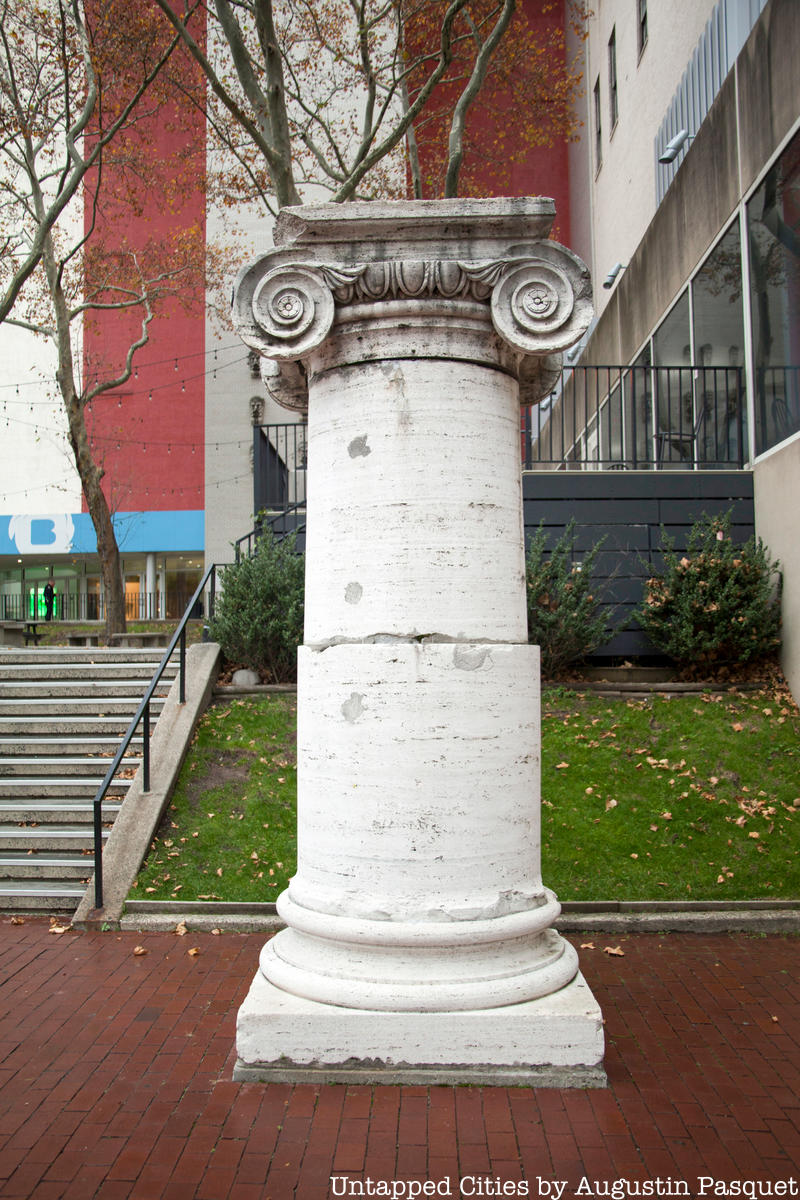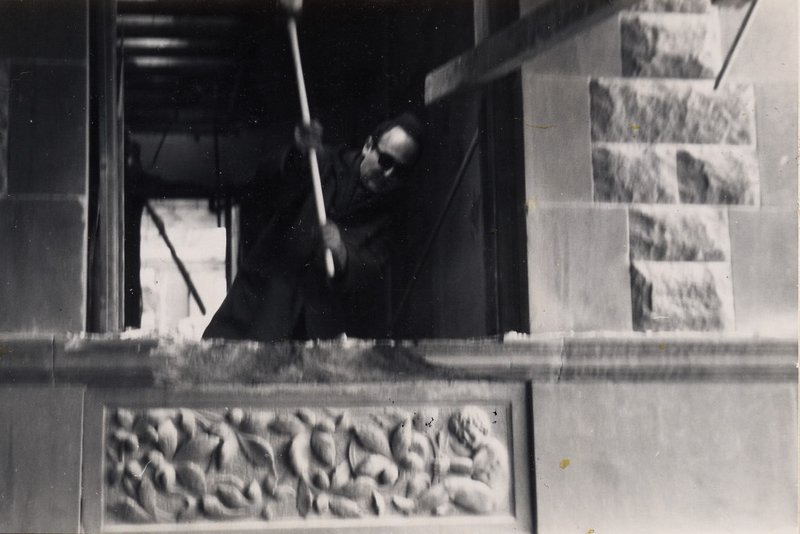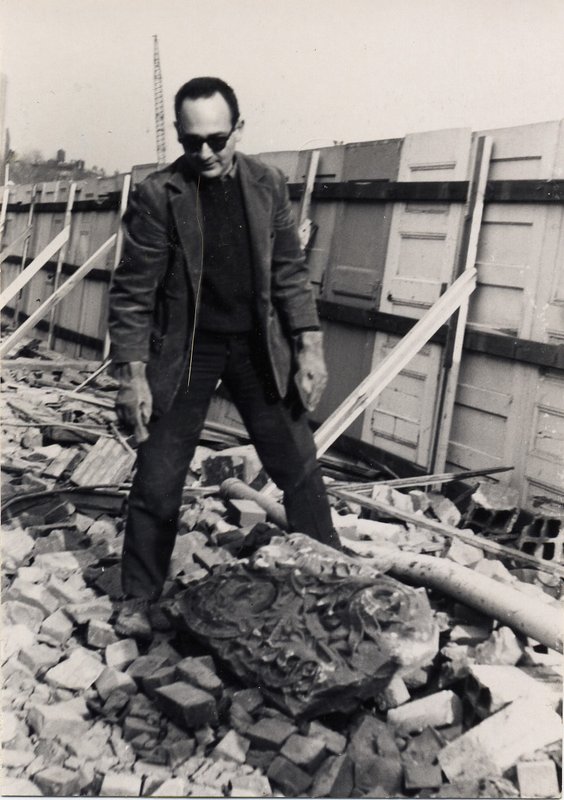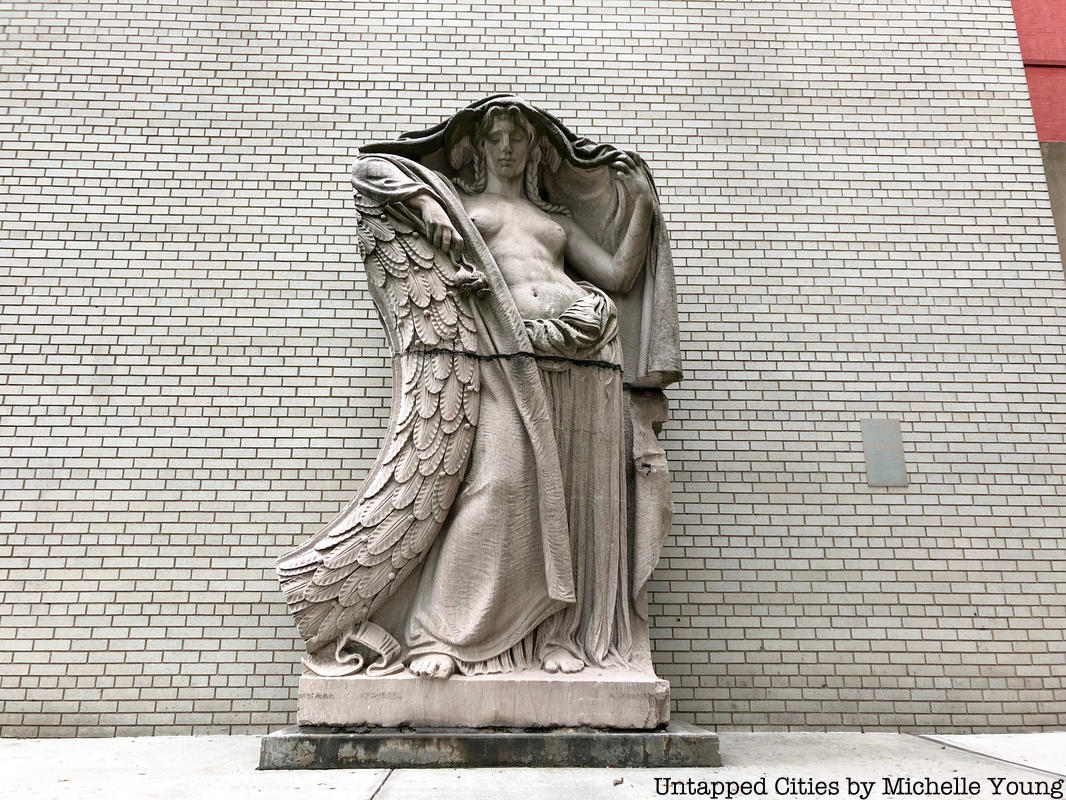On October 28th, 1963, exactly 55 years ago, demolition began on the original Pennsylvania Station, a glass, marble, granite and steel masterpiece by architectural firm McKim, Mead and White. The train station on the west side of Manhattan, only 53 years old, became a martyr for the landmarks preservation cause when the air rights to Pennsylvania Station were sold after the Pennsylvania Railroad found itself in serious financial trouble. What was built instead was Madison Square Garden, with commuters constrained to an underground labyrinth. Architectural critic Vincent Scully famously described the contrast: “Through [the original station] one entered the city like a god…One scuttles in now like rat.”
Since 2013, Untapped Cities has specialized in tracking down the dozens of remnants of the original Pennsylvania Station, many which abound in the much-maligned station today. Many artifacts still exist owing to the piecemeal demolition and construction – it was decreed that not a single day of train travel could be disrupted during the large infrastructural transformation. Our popular tour is led by the playwright Justin Rivers of “The Eternal Space,” a play about the demolition of Penn Station.
Tour of the Remnants of Penn Station
During the demolition process, many enormous granite pieces from the station were simply dumped into the New Jersey Meadowlands and other places. The twenty-two eagles, sculpted by Adolph A. Weinman, that flanked the four “Day and Night” clocks were sent to new homes throughout the country, with two remaining at the current station. The clocks, which were located above each of the station’s four entrances, were less lucky – two were lost in the Meadowlands, one was sent to an Eagle Scout Memorial in Kansas City, and half of one was found in a Bronx recycling depot in the 1990s.
 Charles Follen McKim. Partial Column, from Penn Station
Charles Follen McKim. Partial Column, from Penn Station
Fortunately for posterity, the Brooklyn Museum has two remnants of the original Penn Station: the “Night” half of a “Day and Night” sculpture, standing eleven feet tall, and a partial marble column from the waiting hall displayed in the Steinberg Family Sculpture Garden. The artifacts were recovered thanks to the efforts of the Anonymous Arts Recovery Society (AARS), a group of New York City creatives, led by influential New York gallery owner Ivan Karp. During the height of New York City’s urban renewal, the Society was dedicated to salvaging the remnants of historical nineteenth-century architecture.
 Ivan Karp in a building on 94th Street, circa 1963. Photograph by Jill Gill
Ivan Karp in a building on 94th Street, circa 1963. Photograph by Jill Gill
If this sounds familiar, it’s because Karp served as an inspiration for the main character of The Gargoyle Hunters by John Freeman Gill, who will be giving a talk about Karp and his book on November 4th with the Society of Jewish Science / Center for Applied Judaism, hosted by the Murray Hill Neighborhood Association. The AARS, with federal tax-exempt status, obtained the Penn Station fragments by offering tax credits to the companies responsible for the demolition of the station.
 Ivan Karp at a demolition site at St. James Place by Pearl Street circa 1963. Photograph by Jill Gill
Ivan Karp at a demolition site at St. James Place by Pearl Street circa 1963. Photograph by Jill Gill
These remnants of Penn Station are placed among many other salvaged architectural sculptures including the Replica of the Statue of Liberty in the Sculpture Garden, which you can access from the The Café in the Brooklyn Museum. The Museum also has two decorative plaques from the exterior of Penn Station that are not on display.
You can also take a tour of the Remnants of Penn Station with Untapped Cities
Tour of the Remnants of Penn Station
Check out 5 Remnants of the Original Penn Station you can see today.






